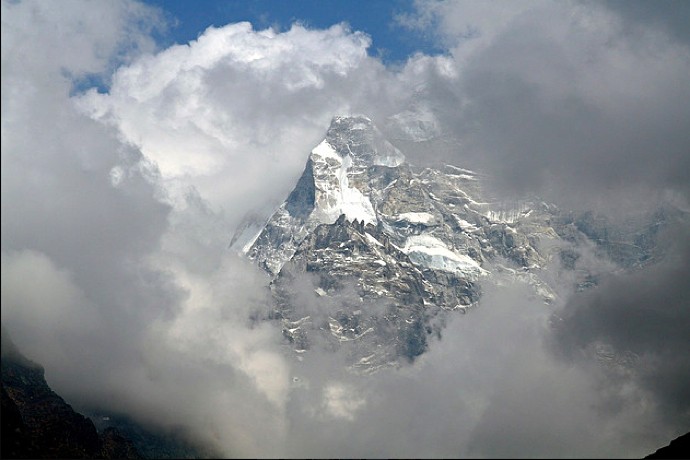It’s been a bloody couple of years on the world’s highest peak. In April 2014, an avalanche killed 16 Sherpa guides on Mount Everest. This week, at least 18 people, most of them Sherpas, are dead after earthquakes in Nepal triggered avalanches on the mountain.
These events are sad, but they’re also predictable. Everest is dangerous. It’s also iconic—the world’s preeminent adventure sports pilgrimage site. And that iconic status somehow makes it easier for us to overlook that danger.
The results are ethically fraught. Is the risk worth the reward? Are affluent climbers culpable for Sherpa deaths? Is $2,000-$6,000, the going salary for Sherpas, fair pay for one of the most dangerous jobs on earth?
The power imbalance between locals and foreigners is especially apparent this week. Since the earthquake, Everest climbers and their guides have been the focus of an extensive, ongoing rescue effort. Meanwhile, Nepal’s government has struggled to cope with damage from the quake, especially in remote mountain communities. People on Everest deserve help, too, of course. Still, you start to wonder why so many scarce resources, such as helicopters, are going to the daredevils on the mountain, who chose to place themselves in one of the most of dangerous environments on earth, instead of to rural Nepalis, who did not.
These ethical concerns should matter. But, somehow, the mountain resists most kinds of ethical or rational considerations. It’s done so from the start. Why climb it? someone asked George Mallory, back in 1922. “Because it is there,” Mallory answered, famously.The mountain’s not-quite-rational allure comes from a staid geological metric: namely, altitude. There are harder mountains to climb, and remoter ones, and even, arguably, taller ones. But as the highest mountain in the world, Everest is quantifiably unique. It offers us awe, verified by geology. Getting there is a modern sort of transcendence, driven by high-tech polymers and human willpower.
Like much else that is both iconic and profitable, Everest creates a kind of moral vacuum. In multiple recent cases, groups of climbers have passed dying comrades on their way to the summit, without pausing to stop. And while I don’t mean to oversimplify the issue of Sherpa safety—climbers provide very high-paying jobs for Sherpas, by Nepalese standards, which can be a major boon—there are clear ways that climbers could be more fair to the people who pave their way to the top.
Not every human endeavor needs to have an obvious justification in order to be worthy of pursuit. But the Guinness-Book-of-Records-
In an analogy closer to home, Everest can be compared to the NFL. Both are sources of treasured cultural dramas. Both rely on a system in which powerful people hire less powerful people (mostly from poor communities) to risk their lives.
But neither the gridiron nor the mountain is simply an arena for heroes. Always, something more is at play.





